The German Heckler & Koch (HK) P7 9mm “squeeze-cocking” pistol is one of the most unique semiautomatic pistols ever made. Unique in a very good way, as I saw fit to include the gun in my previously published list of The Top 5 9mm Handguns, and very much in keeping with the longstanding Teutonic tradition of weapons innovation in general and handgun innovation in particular.
Let’s now take a closer look at the P7.
P7 Origins
Both the early history of the HK P7 and its salient features are summed up nicely by Chris Eger in an April 2013 article on the Guns.Com website:
“German police for much of the 20th Century used very innovative pistol designs. Indeed, the ‘PP’ in Walther PP stands for Polizeipistole (Police Pistol) and by the 1970s, their stock of Walther PP/PPK/P1 pistols, in the hands of the dozens of large law enforcement agencies across the capitalist side of the country, were wearing out. In response, the West German government held a series of trials for local gun makers to submit replacement guns … The design of HK’s PSP (Polizei Selbstlade Pistole– Police Selfloading Pistol), the gun that became the P7, fell into the capable hands of Mr. Helmut Weldle. Welde had worked before on several HK designs including the VP70 (the world’s first polymer production handgun) and the HK4. On the HK4, the gun had a ‘squeeze-cocker’ on the rear of the grip. This device cocked the internal striker of the pistol and gave it an exceptionally light single-action trigger. While the HK4 never was marketed, Helmut recycled the squeeze-cocker for his new gun, this time putting it on the front of the grip … Since the device is the pre-set for the trigger itself, it also serves as a safety lever as the trigger cannot be pulled without squeezing the cocker into place. The squeeze cocker requires about 12-pounds of force to close, a feat that is easily accomplished if the user has the proper grip. Once closed, the trigger is ready to fire with a very light (4.5 or 1.5-pound) trigger that has a short reset … The gun itself is a strait [sic] blowback design that fires from a fixed barrel similar to the Walther PPK. This contributes to extreme accuracy. A single-stack 8-shot magazine was standard although a later version, the P7M13 held a double stack 13-rounder.”
One additional feature of the squeeze-cocker that Mr. Eger doesn’t mention is that, in addition to acting as a cocking lever and a safety device, it also does triple duty as a slide release. However, it doesn’t act as a slide catch/stop, which remains a separate functioning part of the pistol.
First produced in 1979, the P7 PSP was an immediate hit with multiple West German Polizei units, as well as with counterterrorist units such as the German Army’s Kommando Spezialkräfte (KSK; “Special Forces Command”). The gun also had some success in the American law enforcement market in the 1980s; for that purpose, HK released: (1) the P7M8, which maintains the 8-round single stack capacity of the PSP but has the added benefits of an ambidextrous magazine release behind the trigger guard — as opposed to the European-style butt-heel magazine release — as well as a synthetic heat shield on the trigger guard; and (2) the aforementioned P7M13, which had the same improvements as the U.S. market P7M8 along with the extra firepower of the 13-round magazine. The M8 was adopted by the New Jersey State Police whilst the M13 became standard issue for Utah Highway Patrol.
P7 for 007?
The HK P7 was even briefly used by The World’s Most Famous Secret Agent, James Bond. Not in any of the 007 films — wherein Commander Bond has mostly stuck with his famous .32 caliber Walther PPK — mind you, but in one of the novels. In the 1980s, when bestselling author and former Royal Marine officer John Gardner (1926-2007; R.I.P.) picked up the mantle from Bond’s creator, Ian Fleming (1908-1964), among the things that Mr. Gardner decided to do was to upgrade 007s armament with a variety of different firearms. Accordingly, in Icebreaker — Gardner’s third novel in the series, published in 1983 — Bond wields a P7 (in addition to a Ruger Redhawk .44 Magnum, but that’ll be for a different article).
As GunMag Warehouse columnist Travis Pike puts it, “As far as James Bond’s sidearms go, this is the only one equally as classy to the PPK … Bond wielding the P7 makes a ton of sense, and if this remained his gun, I could see why.”
Heckler & Hollywood Hans?
Ironically, even though the P7 was designed for, and overwhelmingly used by, real-life good guys, its most famous cinematic usage was by one of Hollywood’s most memorable bad guys, that being Hans Gruber (Alan Rickman), head honcho terrorist in the original Die Hard film from 1988 (you know, the greatest Christmas movie ever made), who uses his P7 to infamously blow the brains out of Nakatomi Chairman Mr. Joe Takagi (James Shigeta).
Personal Shooting Impressions
My first time firing an HK P7M8 was on my 15th birthday back on August 20, 1990 at the Los Angeles Gun Club in Downtown L.A. Then in January 1991, I tried the P7M13 at the dear departed Santa Anita Firing Rage (the location where the famous “Have a nice day!” range scene from the original 1987 Lethal Weapon was filmed) and was particularly blown away (bad pun intended) by (1) how easily I could score center-of-mass hits at 25 yards and (2) the incredible crispness of the trigger.
I was hooked. Alas, they were out of my po’ boy’s budget back then, as well as that of a lot of my fellow gun enthusiasts. Indeed, in the shop’s official adverts for the pistol, HK actually bragged about it being “the most expensive handgun in the world!” Which frustrated the hell out of me, naturally.
Fast-forward to 2007, and I was finally able to purchase one for a very reasonable price of $600, thanks to a batch of West German police surplus guns that arrived upon American shores at that time. For the record, it was the European-style PSP and not a U.S.-style P7M8. A prized possession, to say the least. I’ve put roughly 2,500 rounds through her since then.
For the purposes of this range review, I took the gun to the fine Cindy’s Hot Shots indoor range facility in Glen Burnie, Maryland. Due to time and budget constraints — thanks to a long waitlist at the range, which left me with 45 minutes to testfire three different guns before closing time — I was only able to use 45 rounds for this particular live-fire session. (I would’ve gone a full 50 rounds, but I generously let one of the range employees test-fire the remaining five rounds in the box.) The ammo used was the PMC Bronze 115-grain full metal jacket (FMJ), which travels at a muzzle velocity of 1,150 feet per second.
The session was divvied into 15 rounds apiece at 21 feet, 50 feet, and 75 feet. Head shots were sought at the near and far distances, whilst center torso shots were targeted at the middle distance, using an USPSA-style target made by Baker Targets of Orlando, Florida.
The PSP performed like a champ! All of my head shots at 25 feet connected, with 10 hits in the “A” zone and 5 in the “B” zone. At 50 feet, 11 hits in the center of mass “A” zone with four proverbial black sheep straying from the flock into the “C” zone. At the firing lane’s max built-in distance of 75 feet … welp, seven rounds missed completely, with four strikes in the “A” zone of the noggin and four more in the “B” zone.” Nonetheless, in spite of that subpar long-distance on my part, the gun’s accuracy potential was still readily evident.
Pros: Quite possibly the crispest single-action trigger of any factory stock, non-customized autopistol I’ve ever fired, which in turn helps contribute to the amazing accuracy. Delightfully compact and ergonomic, though smaller-handed shooters may find the double-stack P7M13 version to be a handful.
As for reliability and durability, though not as epic in those regards as the Glock 17, Massad F. Ayoob did document — within the pages of his 1987 book The Semi-Automatic Pistol in Police Service and Self-Defense — a P7 that went 4,500 jam-free rounds without being cleaned.
The fixed barrel, in addition to helping contribute to the weapon’s accuracy, also helps make it delightfully easy to disassemble and reassemble for routine cleaning and maintenance, even more so than a Glock or a Beretta 92/M9, and especially more so than a 1911.
What’s more, the 12 pounds of hand pressure required to activate the squeeze cocker help ensure a crush grip that virtually eliminates the possibility of jamming the gun by “limp-wristing” it. However, lest any prospective new P7 shooters worry about your shooting hands tiring out o quickly, take heart; as noted by The Truth About Guns Deputy Editor “Jeremy S.” in his glowing April 2022 article, it takes “only about 1.5 lbs of force to keep it depressed, which means once it’s squeezed you don’t notice it with a normal firing grip.”
Cons: “HK: Because You Suck And We Hate You.” No, that’s not really the official slogan of the HK Customer Service Department, but that’s the long-running cynical joke amongst shooting enthusiasts attempting to obtain warranty service, as HK’s Customer Service, for whatever reason(s), has an infamous perception for treating its private citizen customers like garbage after having apparently gotten a swelled head from having won so many government contracts. Regardless of how exaggerated HK’s bad customer service reputation may be, attempting to get spare parts and service for your P7 will be made all the trickier and more complicated due to the fact that the gun was officially discontinued in 2008.
This is especially concerning because, after every few hundred rounds or so the gas cylinder of the pistol must be scraped to get rid of the excess carbon buildup, which requires a specialized scraping tool, which in turn necessitates going to the secondhand market nowadays. In addition, though as already mentioned, routine field stripping/reassembly/maintenance is a cinch, every so often you have to remove the firing pin assembly from the back of the slide, and that can be a major pain in le derrière./die Arsch.
In addition, if your particular P7 is the European market version that lacks the heat shield, the trigger guard gets hot to the touch. To quote my aforementioned range staff member/new shooting buddy who touched off the last five rounds of ammo in my box of 50, the trigger guard was already “pretty toasty.” Mind you, this was in a climate-controlled indoor range; just imagine how damn bad it would be after, say, 100 rounds at an outdoor range in the middle of the summer under the afternoon sun! Shooting gloves might be in order.
Last but not least, longtime shooters of more traditional semiauto pistols may have a harder time adjusting to the squeeze-cocking P7’s manual arms than a brand-new shooter who has no such old habits to break.
The Verdict: Yea or Nay?
Those imperfections aside, the HK P7 is a wonderful pistol, and every time I take it to the range (which is admittedly not often enough), fellow shooters gawk at it in admiration and wax jealous. If you’re willing to shell out the extra money to buy one, and willing enough to dedicate the extra time to mastering its operation and its maintenance quirks, then by all means I highly recommend the P7 for home defense, CCW, competition, range fun, and collectibility alike.
Bonus: Glock Photo Essay
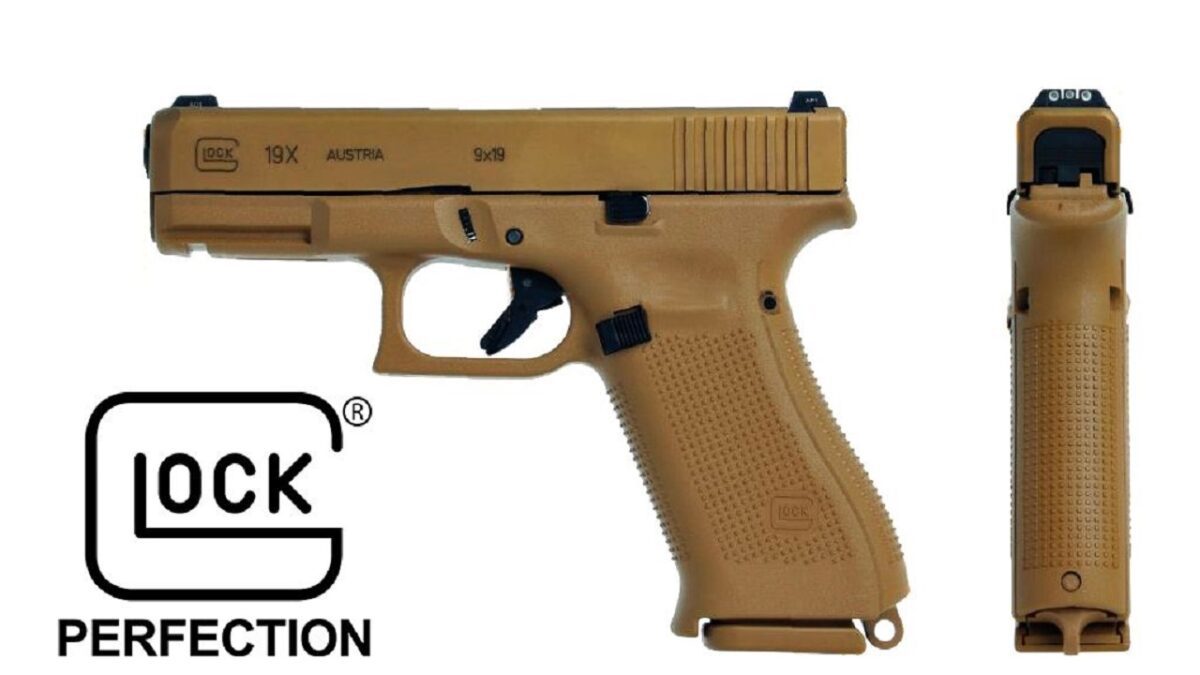
Glock 19X. Image Credit: Glock.
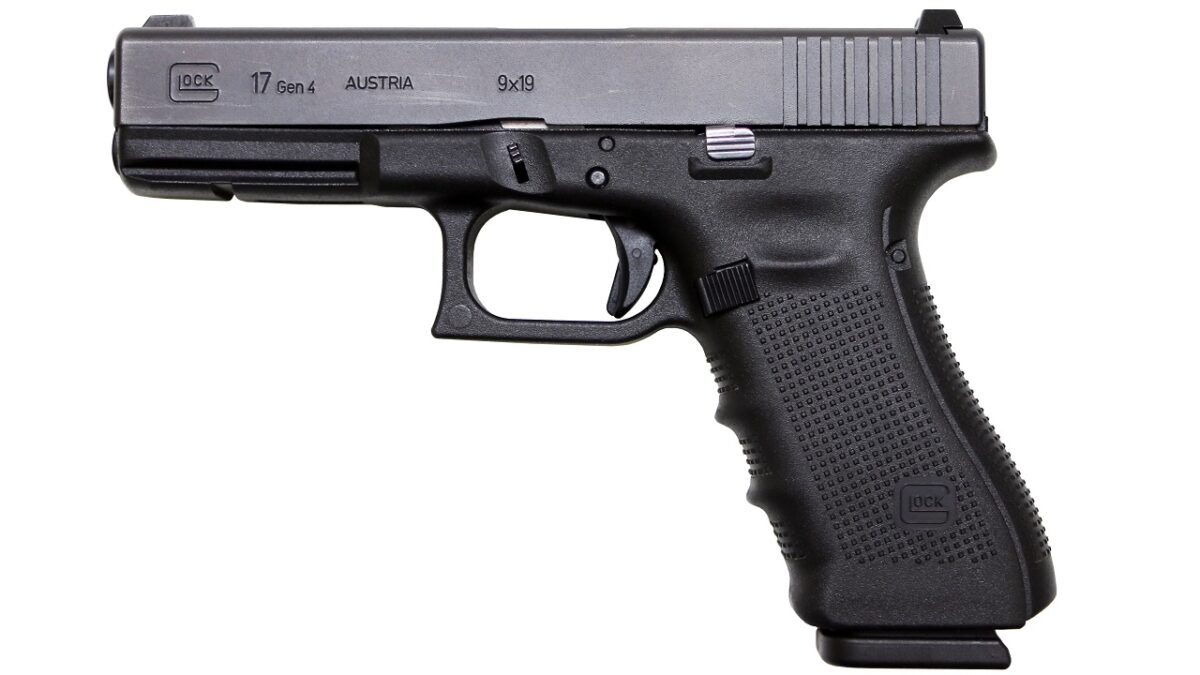
Pictured is the GLOCK 17 Gen 4 Pistol.
In 2013 The MOD signed a £9-million-pound contract to provide the Armed Forces with more than 25,000 new Glock side arms.
The Glock 17 Generation 4 pistol is not only much lighter than the Browning L9A1 pistol previously used by the UK military, it is also more accurate and its magazine holds 17 (9mm ) rounds compared to 13 rounds for the Browning.
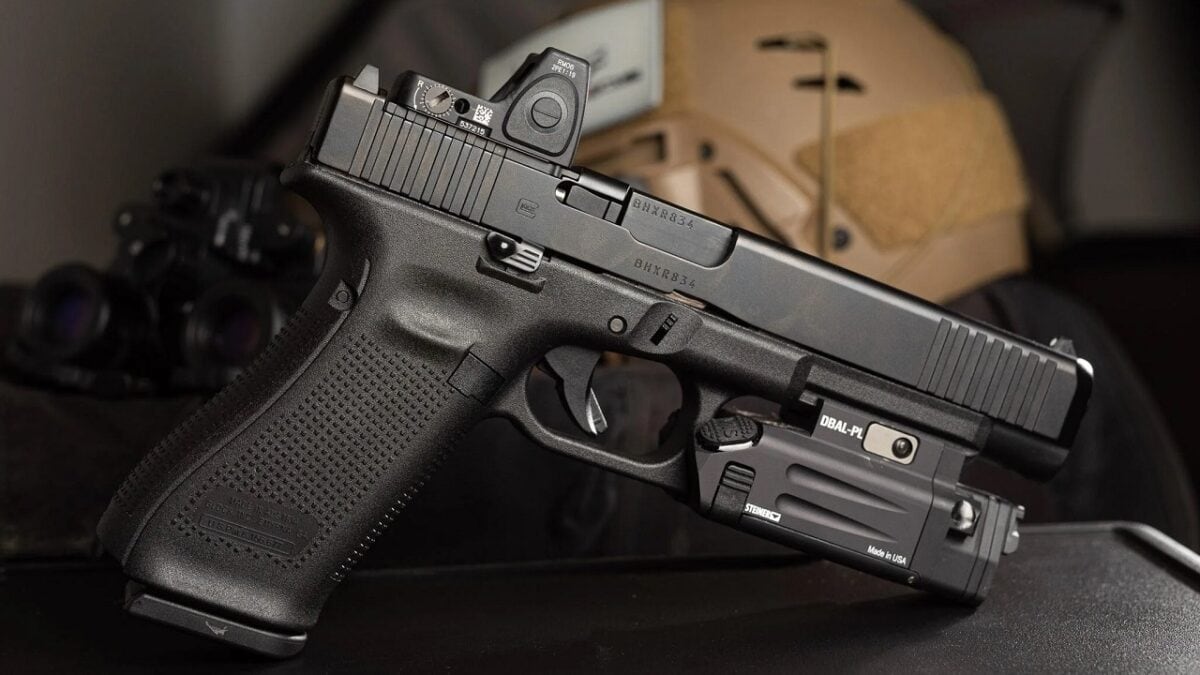
Glock 34. Image Credit: Creative Commons.
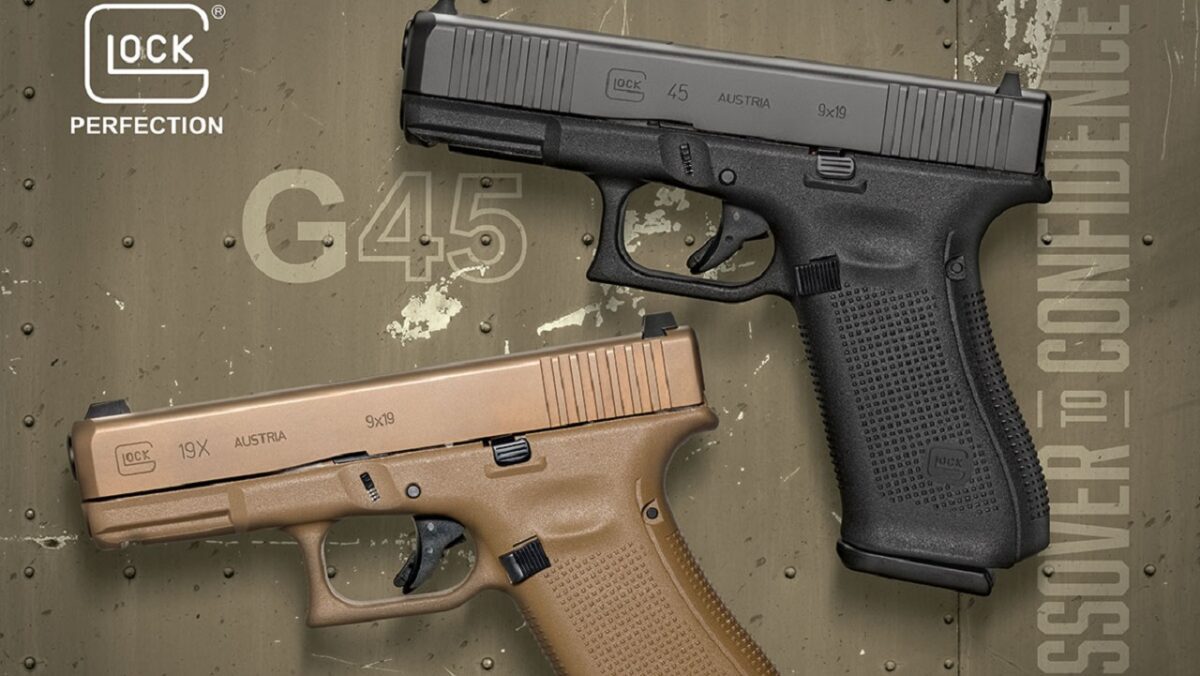
Glock 45. Image Credit: Creative Commons/Glock Handout.
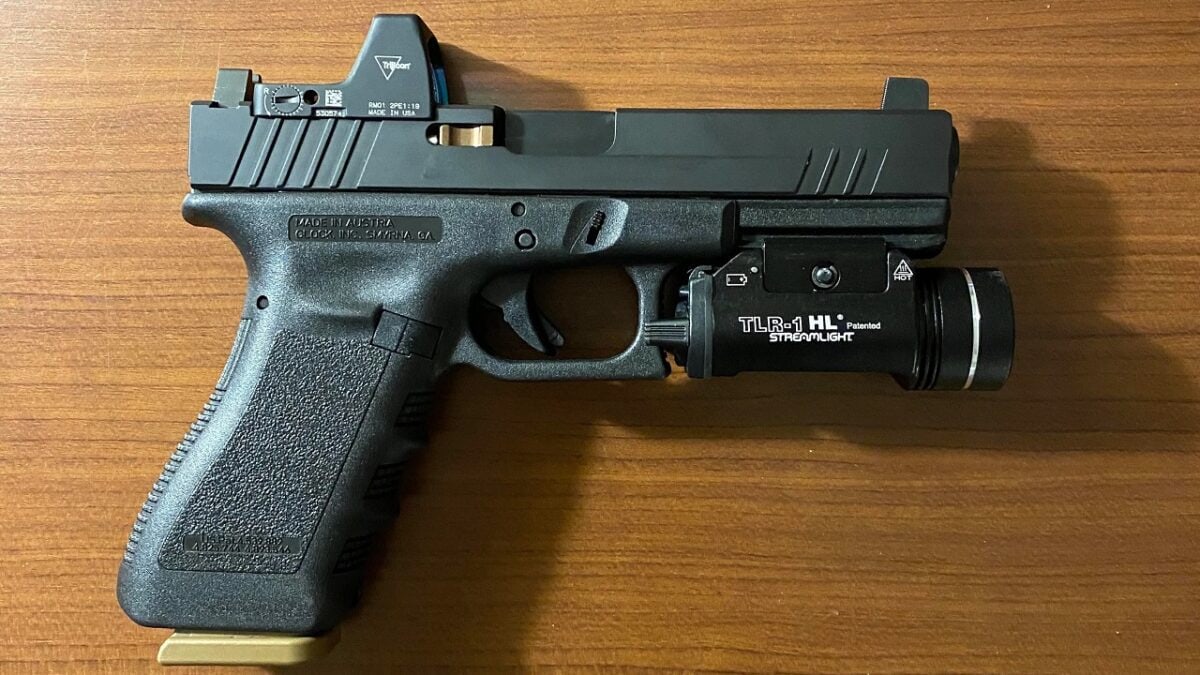
Glock 17. Image Credit: Creative Commons.
Christian D. Orr has 33 years of shooting experience, starting at the tender age of 14. His marksmanship accomplishments include: the Air Force Small Arms Ribbon w/one device (for M16A2 rifle and M9 pistol); Pistol Expert Ratings from U.S. Customs & Border Protection (CBP), Immigration & Customs Enforcement (ICE), and the Federal Law Enforcement Training Center (FLETC) Criminal Investigator Training Program (CITP); multiple medals and trophies via the Glock Sport Shooting Foundation (GSSF) and the Nevada Police & Fires Games (NPAF). Chris has been an NRA Certified Basic Pistol Instructor since 2011.

